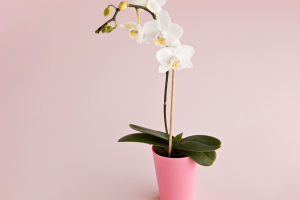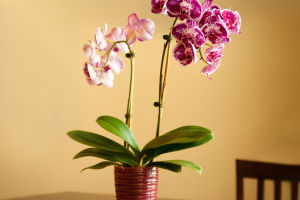Succulent plants have become increasingly popular among gardening enthusiasts in recent years.
These plants attract attention with their unique shapes, wide variety, and relatively simple maintenance requirements.
Succulent plants display a range of appearances, from small, delicate leaves to colorful branches. Each type of succulent has its unique charm. The most notable feature of Succulent plants is their ability to store water, which is essential for their survival in arid environments.
They have special tissues in their leaves, stems, or roots that store large amounts of water, helping them survive for long periods without water. This drought tolerance allows Succulent plants to thrive in deserts, dry mountains, and poor soil environments.
For example, plants in the Cactaceae family are typical drought-tolerant Succulent plants, capable of surviving in extremely dry conditions for months or even longer.
Succulent plants come in many types, including plants from the Cactaceae, Crassulaceae, Agavaceae, and Asclepiadaceae families. Each family has its unique morphology and growth habits.
For instance, the Crassulaceae family has fleshy, thick, and full leaves. Popular varieties like Sansevieria, Jade Dew, and Bear's Paw are favorites among gardening enthusiasts.
Succulent plants are not only popular due to their various shapes and rich colors but also because of their drought tolerance and relatively easy maintenance. For those with no gardening experience, Succulent plants are ideal starter plants.
They don't need frequent watering, often only once every few weeks or once a month, depending on the plant type and growing environment. Additionally, Succulent plants have simple soil requirements—loose, well-draining soil is sufficient for their growth.
Compared to plants that need delicate care, Succulent plants are more low-maintenance, making them a great choice for busy urban dwellers.
However, while Succulent plants are relatively easy to maintain, they still come with challenges. Overwatering is a major risk for Succulent plants. Because they store water, they require less of it, and too much can cause root rot, leading to plant death.
Thus, it's crucial to control the frequency and amount of watering, ensuring that the soil dries out completely between waterings. Additionally, although Succulent plants are drought-tolerant, they still need sufficient light to grow properly.
Without adequate light, they will grow slowly, their leaves will lose color, and they may become leggy. Placing them in a sunny spot or using supplemental lighting is essential for keeping them healthy.
When growing Succulent plants indoors, selecting the right variety is crucial. Some Succulent plants have higher temperature and humidity requirements and are better suited to specific environments.
For example, plants like Jade Dew thrive in cool and humid conditions, making them ideal for indoor spaces with lower light levels. On the other hand, heat- and drought-resistant varieties, such as cacti, are best placed on balconies or windowsills where they can receive plenty of sunlight.
Succulent plants have become popular not just for their aesthetic appeal but also because they are easy to care for. They are an important part of home decor, art, and even education about nature.
Whether you're an experienced gardener or a beginner, Succulent plants offer both fun and satisfaction. In the fast-paced modern world, Succulent plants bring a sense of tranquility with their low-maintenance requirements and resilient nature.


